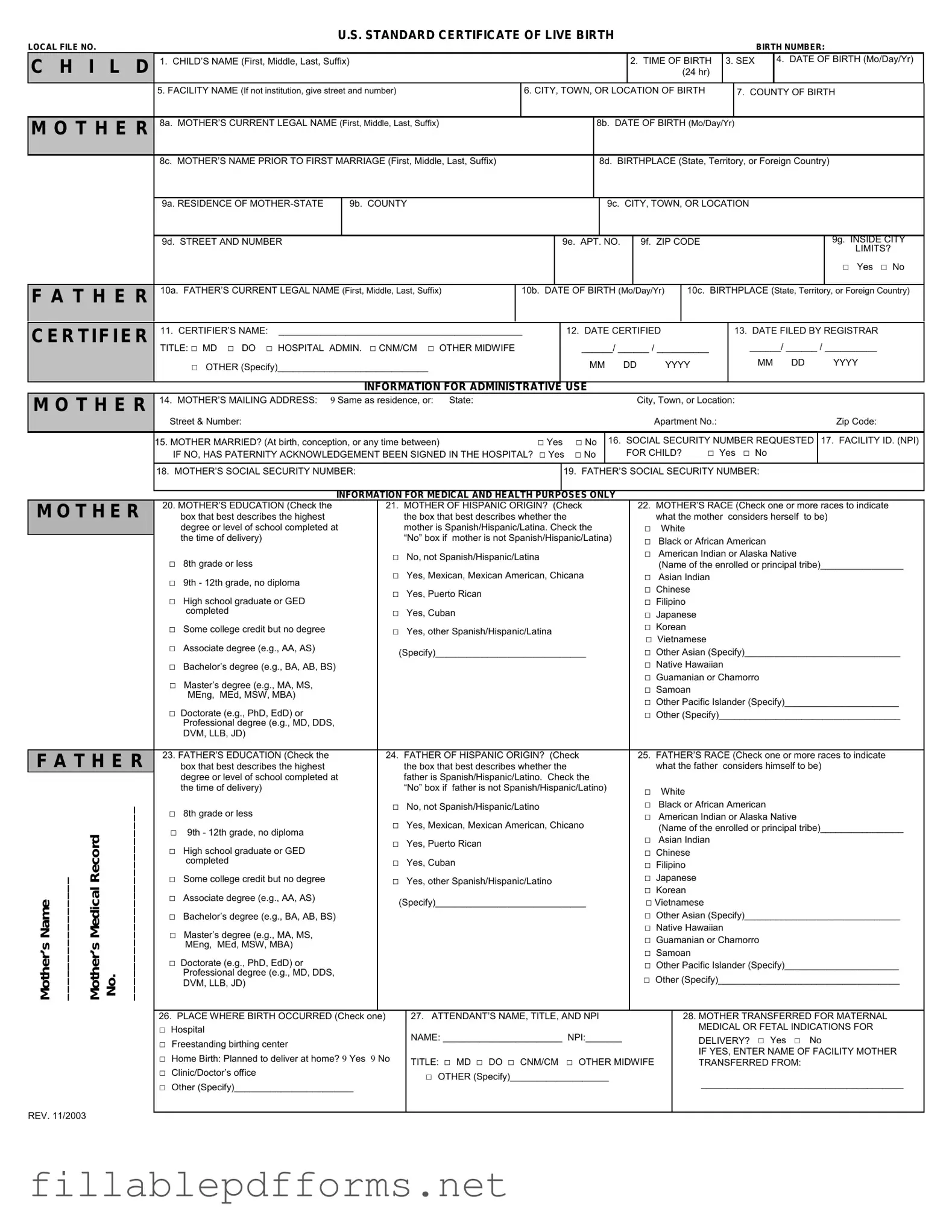The CDC U.S. Standard Certificate of Live Birth form plays a crucial role in documenting the birth of a child in the United States. This official record serves not only as a vital statistic but also as a foundational document for establishing identity and citizenship. The form captures essential details, including the child's name, date and place of birth, and the parents' information. Each section is designed to ensure accurate data collection, which is vital for public health and demographic research. Furthermore, the form includes spaces for information regarding the attending physician or midwife, as well as the method of delivery. Completing this form accurately is important for parents, as it facilitates the issuance of a birth certificate, which is often required for school enrollment, applying for a Social Security number, and other legal purposes. Understanding the significance of this document can help parents navigate the often complex process of registering their child's birth while ensuring that all necessary information is provided.
